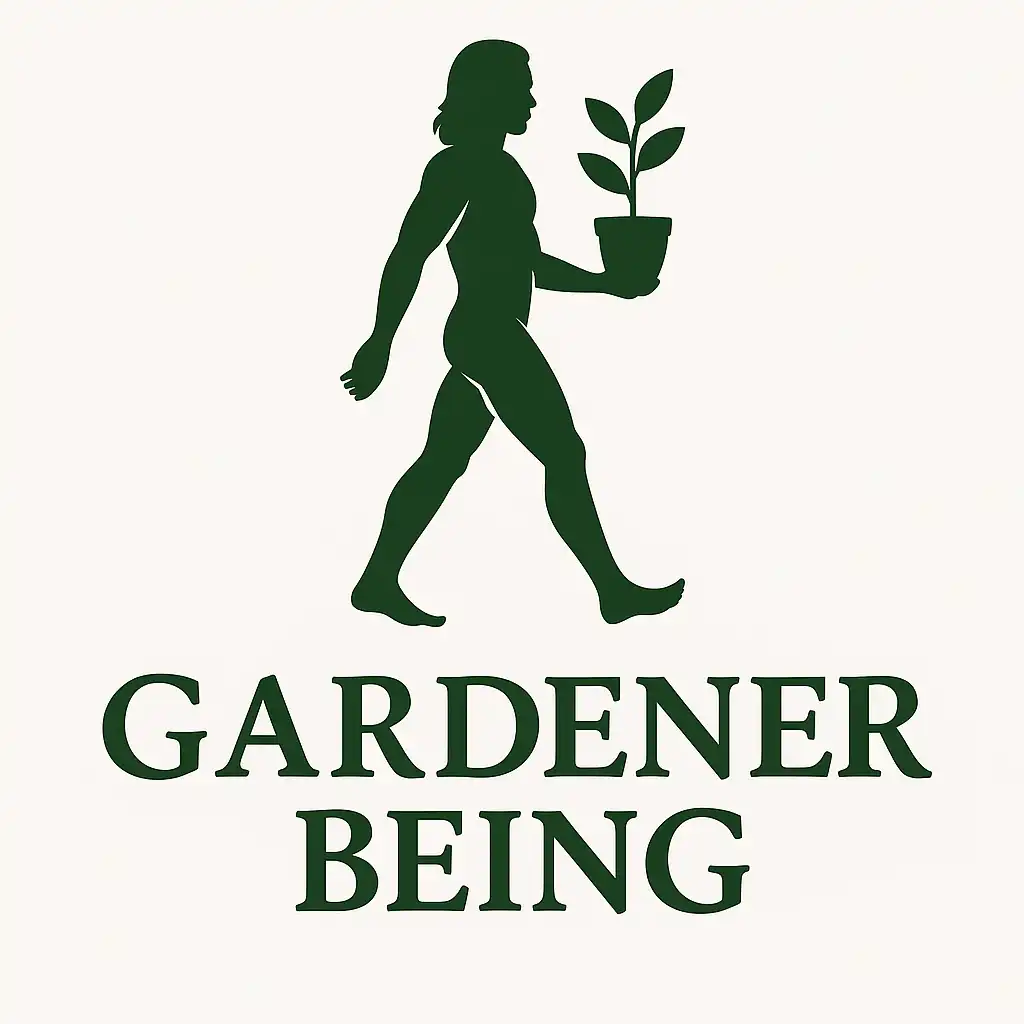Want to avoid weeding all summer, cut back on watering, and improve your soil quality? Discover the best mulch types and how to use them effectively in your garden.
Reasons that using mulch in the garden can be really beneficial include weed suppression, moisture retention, and improved soil health.
Benefits of Mulch
- Weed suppression: Mulch can help suppress the growth of weeds by blocking sunlight from reaching the soil surface, which inhibits weed seed germination.
- Moisture retention: Mulching prevents soil moisture evaporation, thus reducing the amount of watering needed. This is of particular importance during periods of hot and dry weather.
- Improved soil health: Natural organic mulches such as grass clippings, leaf mulch, and wood chips break down over time, adding nutrients and organic matter to the soil, improving fertility and soil structure.

In addition to those benefits, mulch can also help regulate soil temperature. It will keep soil cooler in the hot summer months and warmer in the spring and the fall when the temperatures are cooler.
This regulated soil temperature helps with the growth and formation of most vegetables and fruiting plants. It can also help with soil erosion in areas that receive very heavy rainfall or strong winds.
Mulching can help prevent the spread of certain diseases, in particular those that can be spread by infected soil Splash up. The mulch prevents soil from splashing up onto the bottom leaves during periods of heavy rainfall or overhead irrigation, thus preventing or slowing the spread of certain diseases.
It can also deter certain Garden pests. Critters that would normally crawl into the soil beneath a plant and lay their eggs sometimes are deterred by a heavy mulch, and it can provide a habitat for predatory insects and arachnids and other Critters.
Favorite Types of Natural Mulches
There are quite a few different types of natural mulches that will work well in the garden, and what’s best is going to depend a lot on specific growing conditions and what’s readily available in your area.
Leaf Mulch
Some favorite mulches are totally free waste products. Being on a partially wooded lot, there are often a lot of leaves in the fall.

Chopping and collecting the leaves with a mower bagger and just leaving them in this big pile at the back of the property allows for use as needed. It’s also been heard that folks put leaves in big garbage bags, which speeds their decomposition.
Over time, as this all starts to decompose, you end up with this lovely substance known as leaf mold. Leaf mold is simply composted leaves.
When they break down, they turn into this dark, crumbly, soil-like substance. It’s an absolutely beautiful addition to the garden, and usually ends up with a nice mix of partially to fully broken down leaves by this point in the year.
In addition to providing nutrients which can act as natural fertilizer, leaf mold contains tons of microorganisms, primarily fungi that are beneficial for its breakdown and are very important for soil Health.
These microorganisms help to break down the organic matter, making it more readily available to plants. Leaf mulch is one of two preferred mulches to use in actual garden beds around plants.
When transplanting, typically planting the whole area, watering well, and then applying several inches of leaf mulch over the whole bed is recommended, but avoid putting the leaf mulch right up next to the plant stems.
If direct sewing, typically either mulching the entire bed first and then clear a small path to plant in, or waiting until the seedlings are up several inches and then mulch is recommended.
Chopping leaves, if possible, before using them as mulch in the garden is highly recommended.
In the fall, using some leaf mulch is also a good idea. Avoiding leaving any soil exposed, covering beds where a cover crop has not been planted with several inches of leaf mulch in the fall is a good idea.
Over the course of the fall, winter, and spring, a lot of those break down, and any residue that’s left is simply scooted out of the way when it’s time to plant.
Even with concerns with using Walnut in the garden due to potential jaglone toxicity, there have been no issues using a relatively small proportion of Walnut leaves mixed in with all of those other species.
Grass Clippings
Another favorite freebie is grass clippings, and this is the other mulch that is preferred to use in garden beds. Bonus if you can use leaf mulch and grass clippings together.
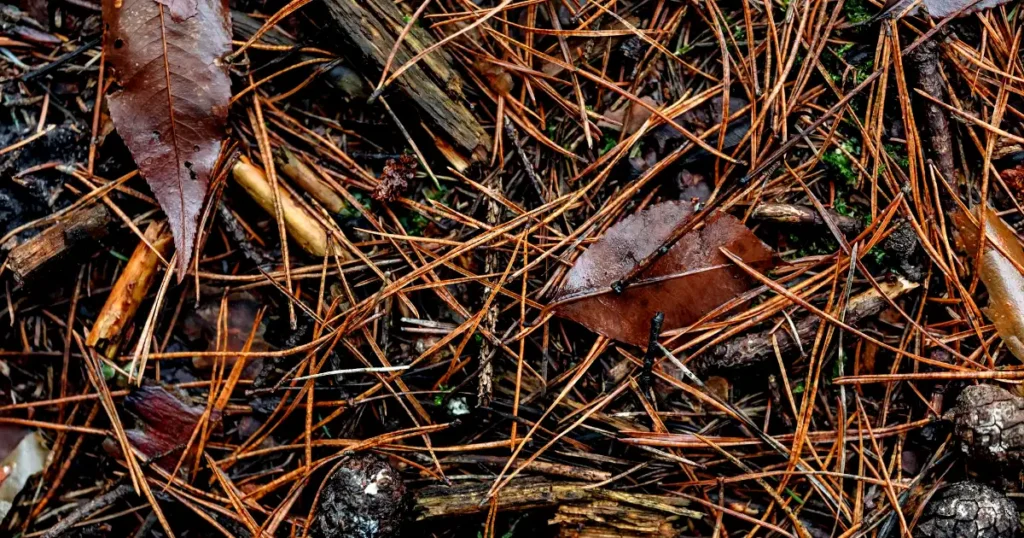
They are used the same way, so either apply in a layer around transplants, taking care not to have them pushed right up against the plants, or mulch seedling beds with them, either clearing a little path when planting or waiting to mulch until after seedlings are up a few inches.
Grass clippings are great because they can contain up to 4% nitrogen by weight, making them a natural source of fertilizer for garden plants. When using grass clippings as a mulch, that nitrogen breaks down slowly and provides a slow release into the soil.
| Both fresh grass clippings and dried grass clippings can be used as mulch in the garden. |
Even with some weed seeds in with the grass clippings, the mulch does more to suppress weeds than it does to contribute any additional weed growth to the garden.
Wood Chips
The next few mulches are preferred to be used as mulch in garden paths and areas surrounding Gardens rather than up in actual beds, and the first of those is wood chips.

Wood chips are great for the garden. They are typically used in garden walkways, and over the course of a year or two, they slowly break down, and once they are decomposed, all of that lovely broken down material is raked up into beds, but notice that waiting until they have broken down is important.
One of the more common mistakes is applying a very thick layer of wood mulch on seedling beds. This can cause issues because, in addition to wood mulch being a difficult thing for tender young seedlings to push up through, the decomposition process of wood chips can actually cause the release of volatile chemicals, which can inhibit seed germination.
Wood chips, which are rich in carbon, also tend to utilize soil nitrogen as they break down in a process called nitrogen immobilization. This process can temporarily Rob plants of the nitrogen that they need to grow.
This tends to be a much larger issue when large quantities of wood chips are tilled into the soil versus being left on top to use as mulch, and perennial plantings tend to do fine with wood chip mulch, but always provide these plants with a dose of supplemental fertilizer and don’t mulch right up to the base of the plant.
If mulching around larger things like fruit trees or shrubs, do not pile wood chip mulch up around the base of plants. That’s detrimental for plant’s health. Stay a couple inches away and make what is nicknamed a mulch donut where it gets a little bit thicker as you move out away from the plant to really hold moisture in around that root area.
Nitrogen immobilization can be detrimental to tender young seedlings, especially those that have not formed a robust root system yet. If you want to use wood chips as a mulch in annual vegetable garden beds, raymule wood chips are probably your best bet.
Ray meal wood chips are going to typically be a mix of small branch inches twigs and leafy matter and tend to have a better Carbon to nitrogen ratio than older larger pieces of wood that have been shipped. Offset any potential nitrogen tie up by mixing in an all-natural nitrogen Source at the time of planting.
Use a finished layer of mulch two to three inches at the most. Don’t go any thicker than that.
Alfalfa Hay
Alfalfa hay is something to use in garden walkways. It’s not quite as pretty or easy to walk on as the wood chips are, but it can’t be beat for weed suppression, moisture retention, and the quick addition of organic matter.
My preferred method is to break flakes off the Bales four to six inches thick and apply these down garden rows. Over the course of a year or two, most of that hay will break down, and all of that decomposed organic matter can then be raked up onto beds.

Alfalfa hay tends to contain 3 to 4% nitrogen by weight, so again, this can act as a natural fertilizer for plants. Keep in mind, depending on the grower and the type of hay being produced, hay can sometimes be treated with herbicides, and caution is required, in particular with the persistent herbicides because it can remain active in the hay and actually leach into the soil when used as a mulch and can damage or even kill young plants.
Straw is sometimes avoided in lieu of hay because of the perceived weed content of a lot of hay. Straw as a garden mulch often contains more weed seeds than hay typically does.
Straw
With straw in general, it does not do as good a job suppressing weeds or retaining moisture, and it doesn’t break down as quickly, which could actually be a pro depending on specific goals.
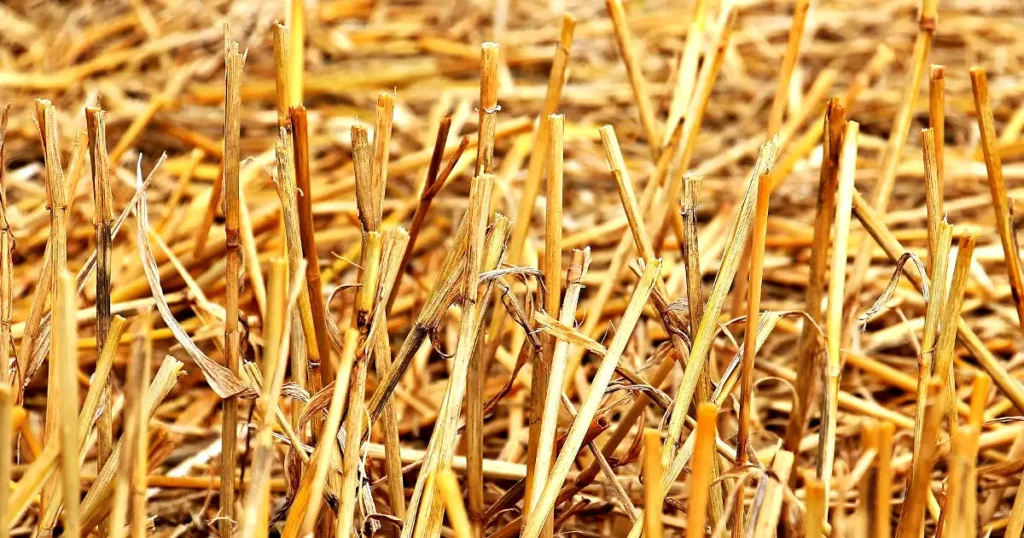
The one exception to that is that a straw mulch is preferred around garlic in the fall. This is because straw does tend to be much easier for that green garlic growth to push up through in the spring, whereas hay tends to become much more compacted and matted together.
Cardboard
Cardboard is another mulch of sorts that is used in garden walkways at times. Typically in garden paths, a layer of cardboard will be laid down first and then covered with the wood chips or the alfalfa hay. While not what I would consider an all-natural mulch, it is effective.
Only plain unwaxed boxes are recommended, and all labels and tape should be removed before putting them down.
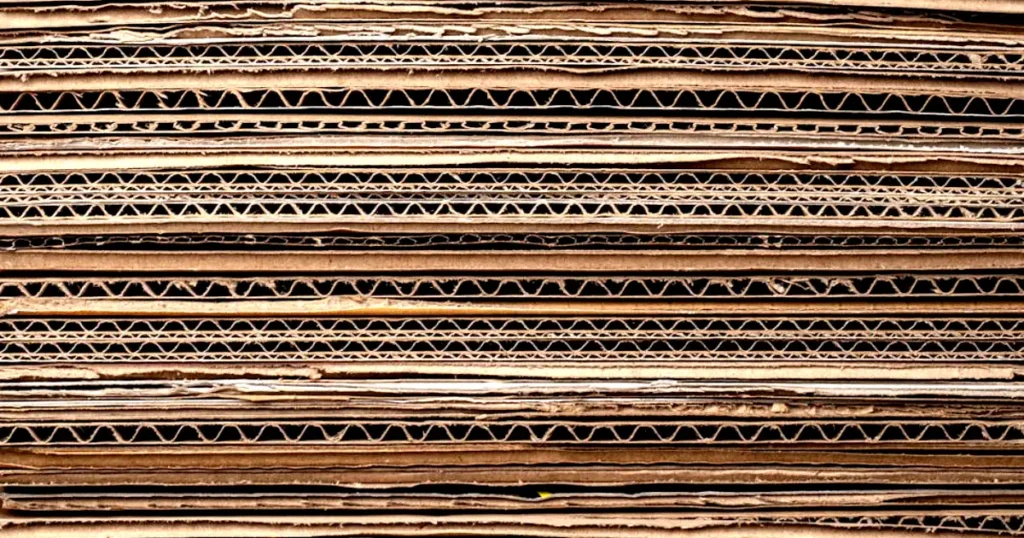
Atra, the sustainable agriculture program, did some research on the safety of using cardboard in gardens and looked into the different substances which go into making cardboard as well as the glues inks and Coatings that may be used. What they found was that the basic components of corrugated cardboard seem to be relatively benign.
Brown corrugated cardboard appears to be the least processed paper product, therefore it would have the lowest number and smallest quantity of chemical substances. The opinion formed is that it’s a heck of a lot less terrible option than spraying to get rid of weeds or becoming so frustrated and overwhelmed with weeding in the middle of the sea season that you just give up.
Cover Crops
Cover crops are another final preferred natural mulch. All different types of cover crops are utilized to achieve different goals in the garden, but there are certain types that make for excellent mulch. When mulching and weed suppression is the goal, those cover crops are opted for which are going to give the most biomass or Green Top growth.
This will include things like the winter Rye, hairy vetch, sorghum sedan grass, and oats. Typically just chopping and dropping these cover crops, so cutting them down at the appropriate time and just letting them lie on the soil surface as a mulch is done, and that residue is simply moved out of the way slightly when it is time to put in transplants or seeds.
All of that residue will help to prevent weeds from popping up. It also helps to retain soil moisture, and the cover crops, like the other mulches, will decompose over time and help to add valuable organic matter to soil.
Certain other cover crops, in particular some types of clover, are good used as a living mulch, so white clover is often a good choice because it will create a dense short mat so thick that it’s difficult for any type of weeds to pop up through, and this can be a good choice for something like in between perennial asparagus Rose.
| Clover has the added benefit of being a legume and thus a nitrogen fixer. |
Potential Downsides of Mulch
While the use of mulch has been game changing, there may be a few scenarios where using mulch might not be desirable.
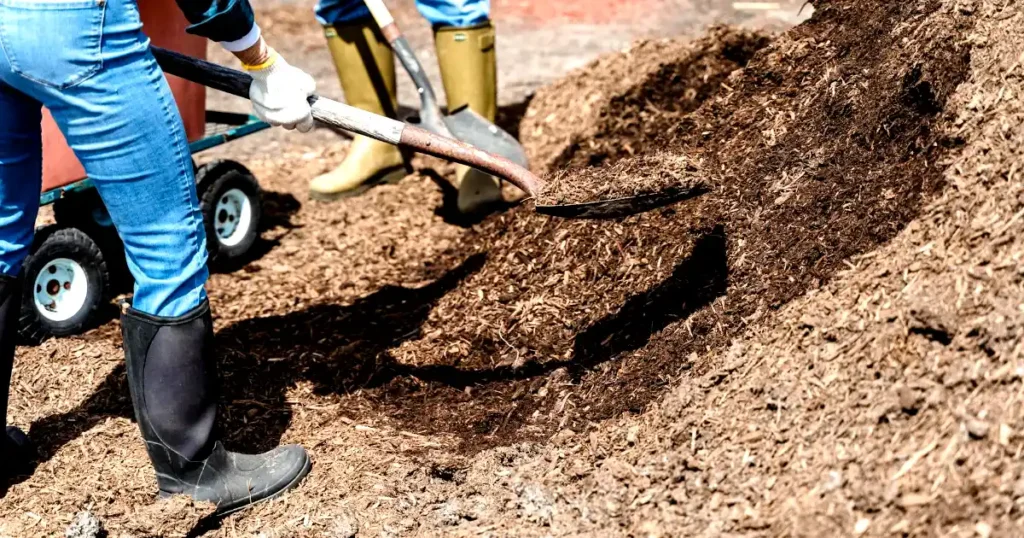
The first is in the case of certain Garden pests. Mulch can provide an ideal habit for slugs because it creates a cool damp moist environment which they love.
If slugs are a big problem, using certain mulches and avoiding others can help. Slugs don’t tend to like wood chip mulch as much as they do things like hay and grass clippings.
The second scenario is when you may be dealing with a very cold wet soil. In this case, often either hold off on adding any Mulch and Scoot the existing Mulch off of garden beds until they’ve had a chance to dry out a little is recommended. When getting a little later in the season, that mulch is simply moved back up onto beds.
Too much of a good thing can be a bad thing. Applying a layer of mulch which is too thick, in particular up around plants in garden beds, can be detrimental to plant Health. It can smother plant roots and prevent oxygen and water from entering the soil.
The general recommendation is no thicker than about two to three inches deep in the garden bed. Go deeper than that in garden paths without those issues occurring.
Timing is important, too. Areas that have just been direct sewn should not be mulched until seedlings are up an inch or two. Covering those seeds with a thick layer of mulch is going to prevent germination, and even if those seeds do germinate, tender young seedlings are often going to struggle to push their way up through a thick Mulch.
If unsure about the source or the quality of mulch, it’s probably best avoided. Wood chips from treated wood, hay that’s been sprayed with herbicide, or grass clippings from treated Lawns are things to avoid as mulch in the garden.
These can actually cause more problems in the long run than what they solve in the short term. If not using your own materials, don’t be afraid to ask questions.
Conclusion
From leaf mold to wood chips, understanding the pros and cons of different mulch types is essential for any gardener. By choosing the right mulch and applying it correctly, you can create a thriving garden with less weeding, less watering, and healthier soil.
